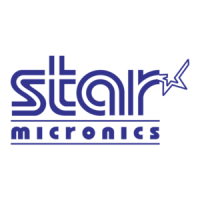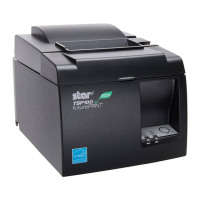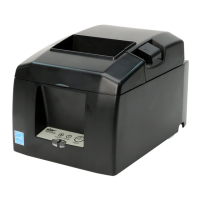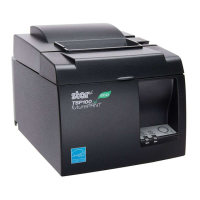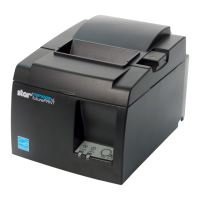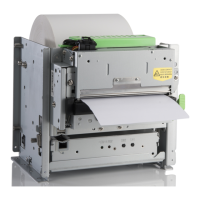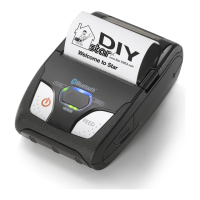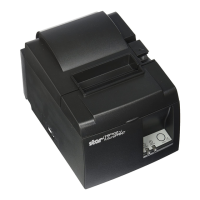– 21 –
THEORY OF OPERATION
Fig. 2-9 Carriage Motor Driving Circuit
Fig. 2-10 Carriage Motor Driving Signals
The utilization of voltage applied to the carriage motor is
described below:
Voltage applied to the carriage motor is changed by setting port
P30 of the CPU to HIGH or LOW and by turning transistors
TR6 and TR1 ON or OFF.
When TR1 is ON, +24V is supplied to the carriage motor and
when TR1 is OFF, +5V is supplied to the motor via diode D1.
2-2-4. Carriage Motor Speed Control
Since the carriage motor is a stepping motor, the carriage can be stopped at a desired position by controlling acceleration
and deceleration. The carriage can also move backward.
The rotational speed of the carriage motor is set by the number of pulses per time unit. The character pitch (horizontal
character size) in each print mode is determined by changing this rotational speed (or carriage transfer speed).
(1) At start-up of the motor:
The number of pulses input to the motor increase in steps (36 altogether), reaching a certain frequency.
(2) To stop the motor:
The number of pulses input to the motor decreases in steps (36), in order to gradually bring the motor to a halt.
(3) When printing is carried out:
Pulses of a uniform pulse width are supplied for printing.
Mode Voltage Application
Operation: +24V Motor Drive
Standby: +5V Holding Bias
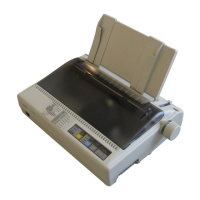
